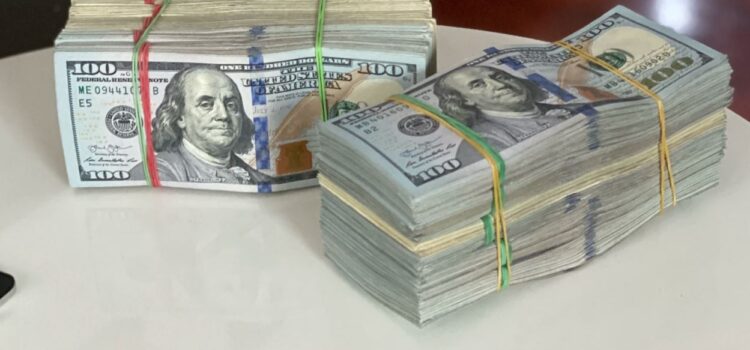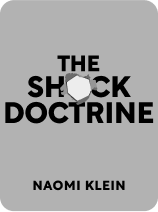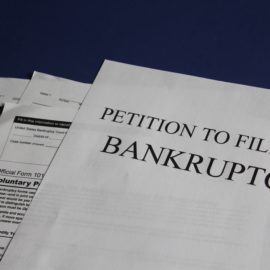

This article is an excerpt from the Shortform book guide to "The Shock Doctrine" by Naomi Klein. Shortform has the world's best summaries and analyses of books you should be reading.
Like this article? Sign up for a free trial here .
Who instituted Poland’s shock therapy? How did the shock therapy affect the Polish economy?
In Poland, shock therapy was implemented on the advice of Jeffrey Sachs who was working as an advisor for the Solidarity party. The Solidarity was reluctant to institute policies that went directly against the worker-centric economy they’d promised to create. But the economy was in a critical state, so they went ahead with Sachs’s proposal in exchange for foreign aid.
In this article, we’ll take a look at Poland’s shock therapy, and what happened in its aftermath.
Poland’s Regime Change
In 1980, Poland was chafing under the control of communist Russia. Tensions came to a head when the Communist Party raised the price of meat. In response, Polish workers formed a powerful union which they called Solidarity.
Led by a charismatic electrician named Lech Walesa, the leaders of Solidarity demanded freedom from the overbearing Communist Party, and the right to instate their own democracy. Furthermore, Solidarity had the numbers to make that happen. The union was over ten million strong—large enough to hold a strike that would bring the entire country to a halt.
In 1989 the Communist Party officially recognized Solidarity. Party leaders agreed to hold special elections, pitting their own party members against the union for control of Poland. Solidarity won in a landslide.
However, like the new democracies in the Southern Cone, Solidarity inherited as many problems as they overthrew: Poland was $40 billion in debt, inflation had risen to 600%, and food was running short. Rather than striving for the worker-centric economy they’d dreamed of, they had the much more immediate concern of avoiding total economic collapse. They needed immediate debt relief and financial aid.
Solidarity turned to the IMF for help, which by this point was firmly controlled by Chicago School economists. Those economists didn’t see a country that had struck a heavy blow against the communist regime that the US so hated—they only saw another place reeling from debt and inflation, caught in the throes of a sudden regime change. In other words, another perfect target for shock therapy.
Meanwhile, the US government congratulated Solidarity on its decisive victory against the Communist party, but still insisted that the Polish people would still have to pay the debts they had inherited from their former oppressors. The US only donated a pittance in aid—$119 million, when the country needed billions.
Sachs Arrives in Poland
While Poland was being denied aid on all fronts, economist Jeffrey Sachs began working as an advisor for Solidarity. After what he’d done in Bolivia—which the rest of the world only knew about through carefully sanitized reports—Poland saw him as nothing short of a messiah.
Sachs’s plan was standard Chicago School neoliberalism: Getting rid of price controls, cutting subsidies, privatizing the state-owned mines, factories, and shipyards, and opening the borders for free trade. It was even more extreme shock therapy than what he’d subjected Bolivia to, but Sachs claimed that making these changes immediately, and all at once, would quickly rein in inflation.
Even more enticing than economic stability, Sachs promised that Poland would quickly become a “normal” European country. That is, it would become a country that the world viewed in the same way that it viewed Germany or France: successful and influential, worthy of attention.
Some members of Solidarity, including Lech Walesa, protested that these measures were the exact opposite of the social-democratic platform they’d run on, and they warned that his proposed shock therapy would only worsen conditions in the country. But others, who were desperate for a solution—any solution—pushed for the party to accept Sachs’s offer. After several months of political paralysis, the party went with Sachs’s proposal. They simply needed the money he was offering, and they needed it immediately.
The Polish prime minister went before the people to announce sweeping changes: the privatization of state-owned industries, a newly formed stock exchange, and a new currency, among others. These changes were to happen immediately, and all at once. In return, Sachs negotiated with the IMF to get Poland some debt relief and $1 billion to stabilize the economy.
The Free Market Takes the Credit
Solidarity’s sudden course change was deeply unpopular. Three years after they swept the elections, 60% of Poland’s citizens still opposed the privatization of state industry. Many felt that they’d been betrayed by the party they’d fought so hard to elect.
As had happened over and over in the Southern Cone, the sudden spending cuts and deregulation led to a depression. Unemployment—which had been effectively zero under communism—skyrocketed to 25%, and remained as high as 20% even after the economy started recovering from the sudden changes.
Sachs, addressing the people’s anger, claimed that he and Solidarity had had no choice. He compared himself to a doctor performing emergency heart surgery, unable to worry about the messy scar tissue he’d leave behind. For the first 18 months or so, the Poles gritted their teeth and endured the hardship. Solidarity and Sachs assured them that it was temporary, and the people believed them. However, as the economy and standard of living failed to recover, the people’s anger—and Solidarity’s confusion—grew. How could it be, the party wondered, that this promised miracle cure had made things worse than they’d been under Moscow’s rule?
The people made their displeasure known with nationwide strikes and protests, forcing the government to slow down its privatization plans. At the end of 1993, four years after Solidarity had taken the reins and instituted economic shock therapy, 62% of Poland’s industry was still owned by the state. Once Solidarity scaled back the shock therapy, Poland’s economy began to rebound.
Solidarity was soundly defeated in the 1993 elections by a coalition of left-wing parties—including the communists who had previously run the country. The coalition took 66% of the seats in Congress that year, while Solidarity won only 5%. The people had clearly and firmly rejected shock therapy.
In spite of all of that, Poland is still held up as a shining example of how free-market capitalism can revitalize a struggling country. The economic gains that the Polish people won by protecting their state-controlled industry are somehow credited to the very shock therapy that they fought against. Meanwhile, all of the inconvenient facts surrounding that shock therapy—the protests, Solidarity’s backpedaling on policy, and their resounding defeat in the next election—get swept under the rug.

———End of Preview———
Like what you just read? Read the rest of the world's best book summary and analysis of Naomi Klein's "The Shock Doctrine" at Shortform .
Here's what you'll find in our full The Shock Doctrine summary :
- A study of the history of economic shock therapy
- How economic shock therapy gave rise to the disaster capitalism complex
- How communities are beginning to recover from the destructive shock treatments






